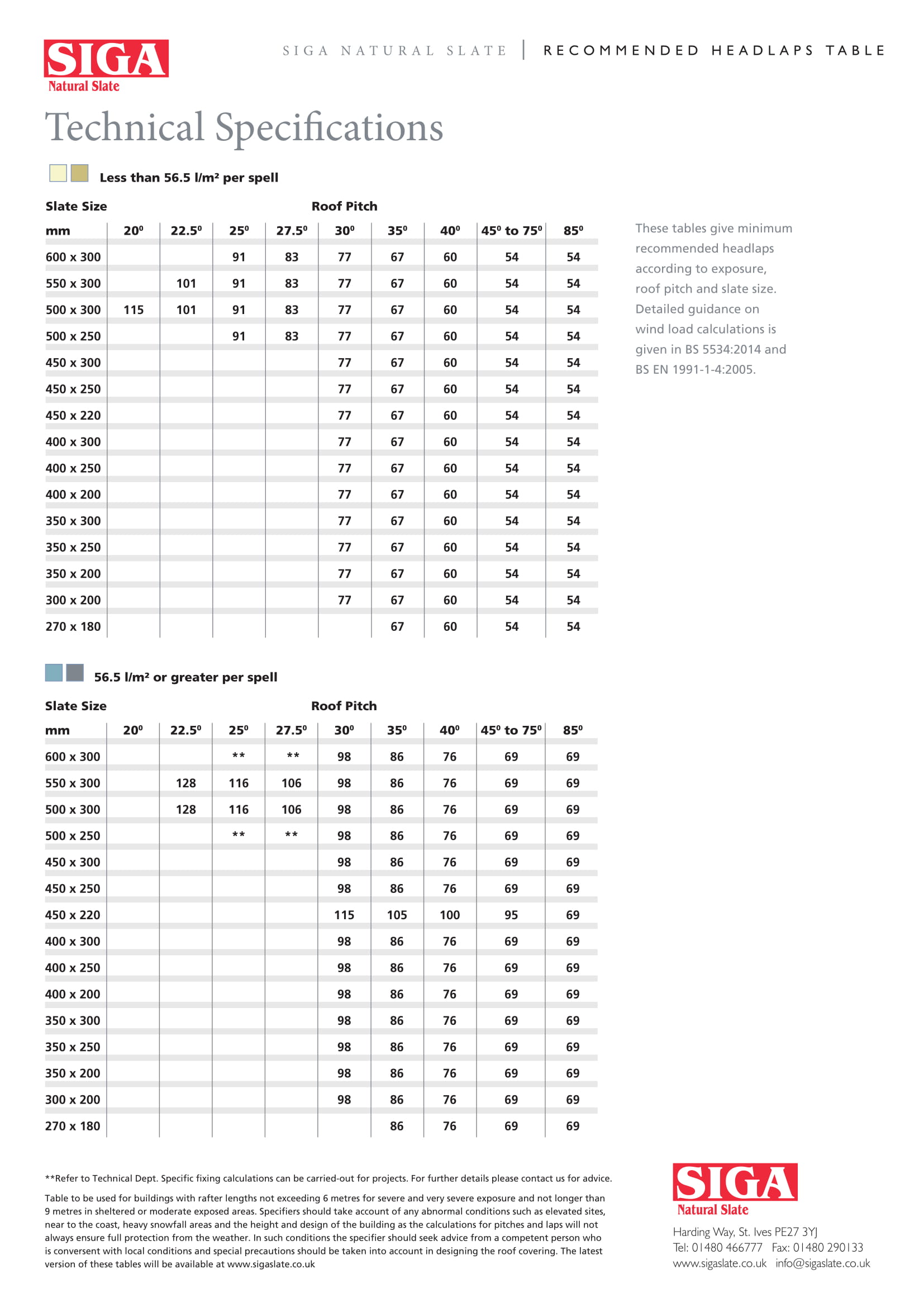BS 5534:2014 is the code of Practice for Slating and Tiling. It describes not only the means of installing slates (nailing or hook fixings), but also the “headlaps” or “lap” required to ensure that the roof remains watertight, even at pitches as low as 20 degrees.
Once you have determined the degree of exposure of your site, use these tables to confirm the minimum headlap for your natural slate roof pitch, or see the range of roof pitches that would comply with the Standard, and which headlap minimum would be required for each.

Size of Head Lap vs Pitch of roof
In general, the lower the pitch of the roof, the greater the lap should be. This longer lap will help to resist both capillary action and wind uplift. On steeper pitches with free-flowing drainage, smaller slates may be used. For exposed sites, wide slates with a greater lap should be used whereas in sheltered areas, roof pitches as low as 20 degrees can be achieved using a hook fixing system.
The most commonly used slate size in Southern England is 500x250mm and 400x250mm in Scotland and the North of England.
Once you have chosen pitch and headlap, you’ll be able to determine the number of slates you’ll need per m2 using our coverage tables.
Notes from BS 5534:2014:
- The Minimum Roof Pitch for Natural Slates is 20 degrees (BS 5534:2014 Page 45), depending on Size of Slate See Table Above (BS 5534:2014 Page 45, Table 9).
- Slates 450mm Long or Less Should Not Be Used at Pitches Of 27.5 Degrees or Less (Moderate & Severe Exposure) (BS 5534:2014 Page 45).
- Slates less than or equal to 460mm long or greater than 450mm long should not be used at pitches of 25 degrees or less in Severe Exposure (BS 5534:2014 Page 45).
- Slates less than or equal to 500mm long or greater than 460mm long should not be used at pitches less than 25 degrees in Severe Exposure (BS 5534:2014 Page 45).
- Generally, the recommendations given on the headlap tables should be followed for rafter lengths of not more than 9m in driving rain exposures of less than 56 L/m2 per spell and 6m in driving rain exposures of 56 L/m2 per spell or greater (BS 5534:2014 section 5.5.4).
- Where abnormal weather conditions might be expected, e.g. on elevated sites, near to the coast, in localities where heavy snow falls are commonly experienced or in conditions of severe exposure, these recommendations for pitches and laps will not always ensure full protection from the weather. In such conditions, the specifier using generic products should seek guidance from a competent person who is conversant with local conditions and any special precautions that should be taken into account in designing the roof covering (BS 5534:2014 section 5.5.1).



What is the minimum width of a cut slate at verges etc?